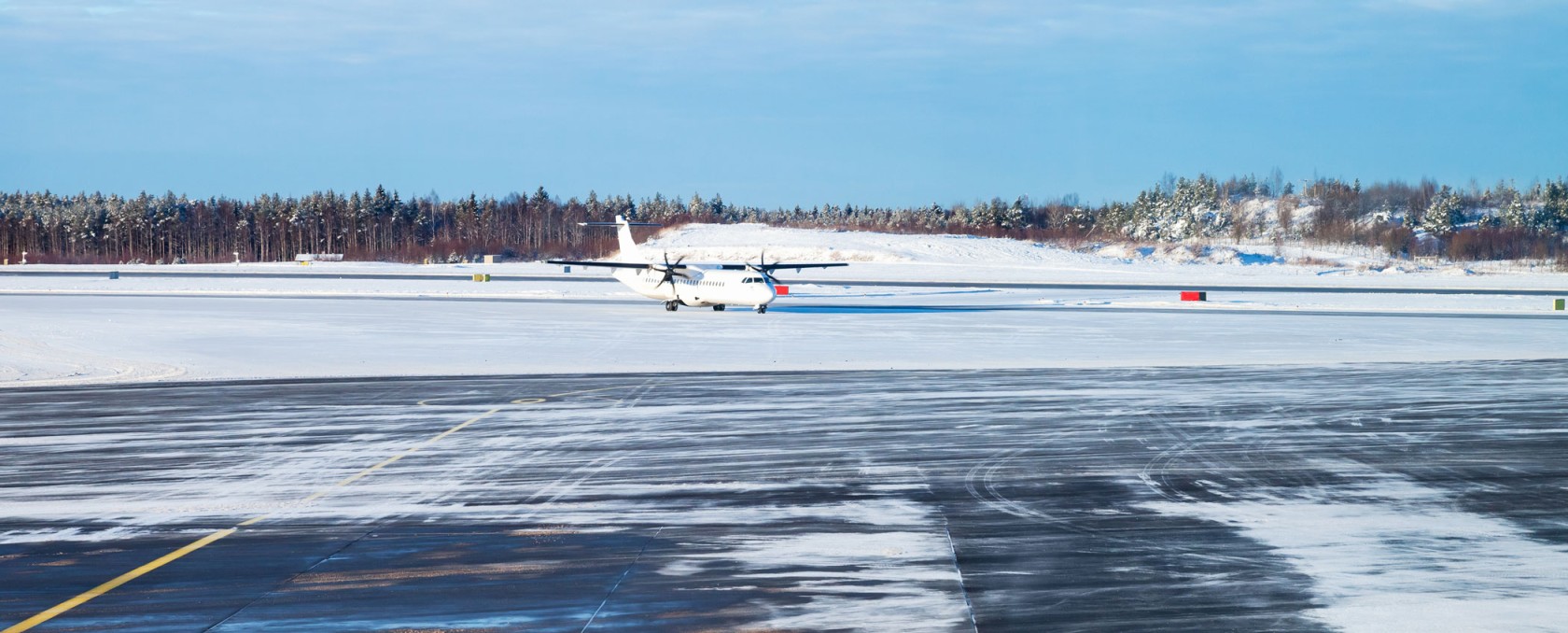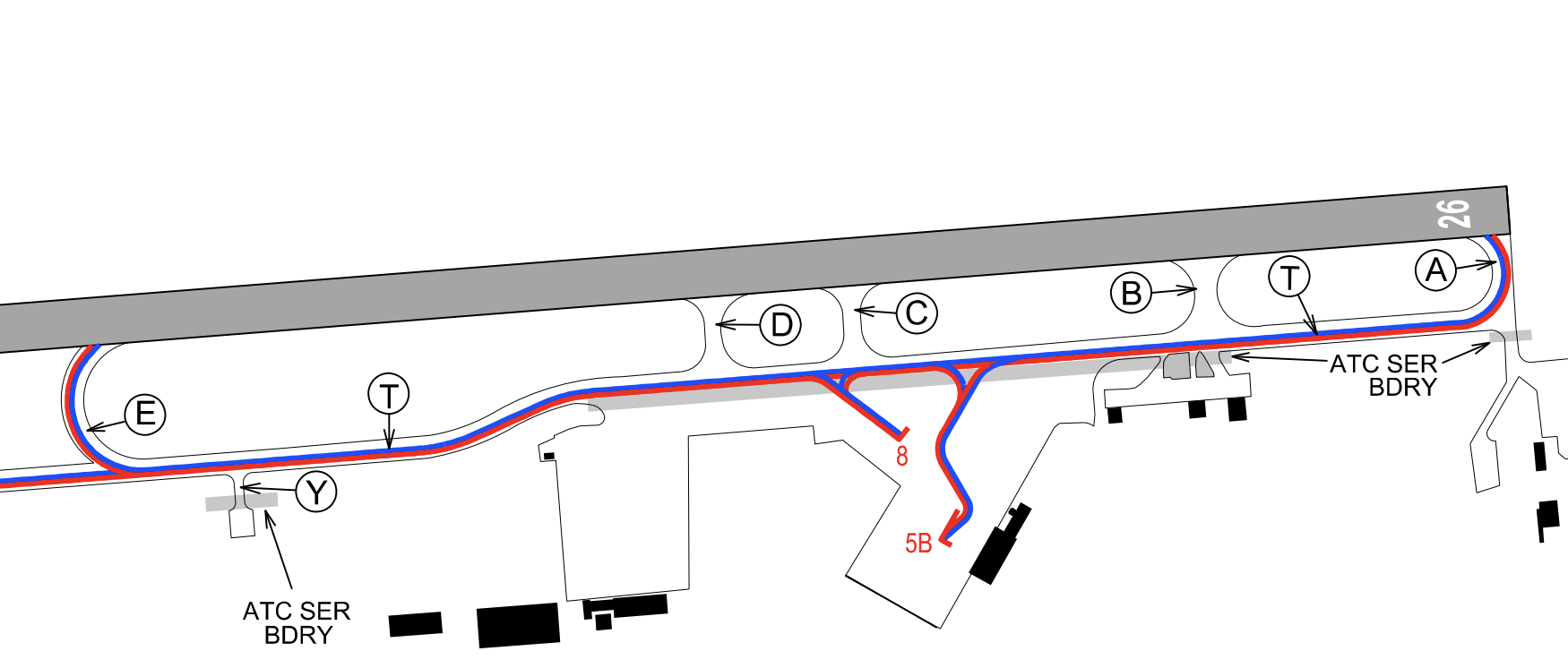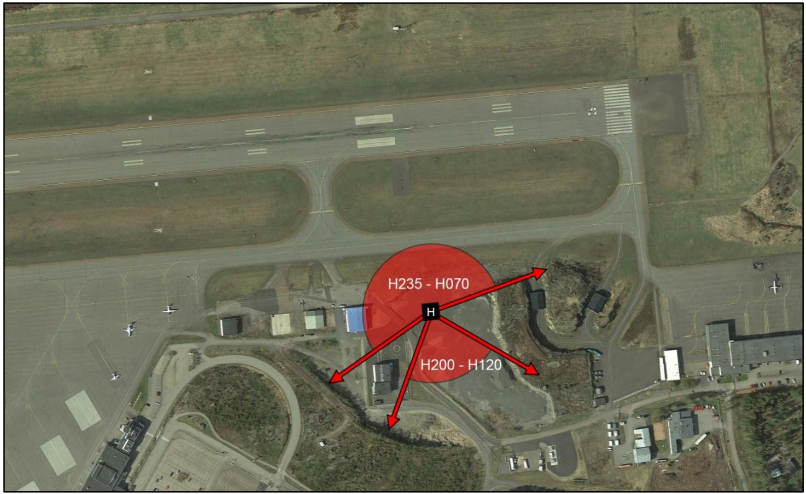🔵 EFTU - Turku
Turku Airport is the fourth busiest airport in Finland according to passenger numbers, located approximately 8 kilometers north of Turku city center. The airport is an integral part of the Scandinavian and Baltic aviation network and serves as an important hub for both commercial and private flights. Turku airport is highly accessible and strategically positioned.
One should note that Turku Airport is open 24 hours a day and offers ATC services during its operational hours. It is surrounded by flat terrain, and pilots should be aware of the weather conditions, especially during the winter months when heavy snow can be expected.
| IATA | ICAO | Charts |
|---|---|---|
| TKU | EFTU | Finland AIP - EFTU |
ATC positions
Turku is a controlled airport with aerodrome control- and approach control service. This service can be combined (tower-radar), or separate.
| Logon code | Call sign | Frequency | Responsibilities |
|---|---|---|---|
| EFTU_TWR | TURKU TOWER | 118.300 | Ground movement, Turku Control Zone |
| EFTU_R_TWR | TURKU TOWER | 118.300 | Ground movement, Turku Control Zone & Terminal Area |
| EFTU_APP | TURKU RADAR | 120.475 | Turku Terminal Area |
Ground layout
- The main apron serving passenger airlines is located next to the Control Tower
- Cargo flights are usually parked on the cargo apron next to taxiway D
- General aviation aircraft are parked on the Apron next to taxiway Y or B
- Medical helicopter base is located next to taxiway B south of the main taxiway
Frontier Guard apron is located next to taxiway A. There is also one hangar for Air Force QRA missions.
Runways
Turku is equipped with one runway 08/26. The preferred runway is considered to be runway 08.
Currently available stands
Stand restrictions
- Stands 5B and 8 can accomodate Code E and F aeroplanes (see table below)
- Stands 4, 5, 6 and 7 can accomodate Jet aircraft up to A321 / B739
- Cargo aircraft are parked on stands 9, 10, 12 and 12
When stand 5B is occupied, stands 5, 6 and 7 shall not be in use. Stand 5B is only used for Code E or F aeroplanes.
| Code | ICAO | Aircraft type | Wingspan M |
|---|---|---|---|
| 🔴 F | A388 | Airbus A380-800 | 79.8 |
| 🔴 F | A124 | Antonov AN-124-100 | 73.3 |
| 🔴 F | B748 | Boeing 747-8 | 68.5 |
| 🔴 F | C5M | Lockheed C-5 Super Galaxy | 67.9 |
| 🔵 E | B77W, B77L | Boeing 777-300ER, -200LR, -F | 64.8 |
| 🔵 E | A359, A35K | Airbus A350-900, A350-1000 | 64.75 |
| 🔵 E | B744 | Boeing 747-400 | 64.44 |
| 🔵 E | A345, A346 | Airbus A340-500, -600 | 63.45 |
| 🔵 E | B772, B773 | Boeing 777-300, -200 | 60.93 |
| 🔵 E | A332, A333, A342, A343 | Airbus A330-200, -300, Airbus A340-200, -300 | 60.3 |
| 🔵 E | B788, B789, B78X | Boeing Dreamliner 787-8, 787-9, 787-10 | 60.12 |
| 🔵 E | IL96 | Iljushin IL-96 | 60.11 |
| 🔵 E | B742, B743 | Boeing 747-200, -300 | 59.6 |
En-route clearance
Please, do not include the SID in your flight plan route.
By default the local tower controller will give clearance to requested cruise flight level.
Departure with SID:
| 🎧 | Fastair 312, cleared to Helsinki, runway 08, Ipmot 3B departure, flight level 140, squawk 5542 Fastair 312, selvä Helsinkiin, kiitotie 08, Ipmot 3B lähtöreitti, lentopinta 140, koodaa 5542 |
Departure with direct route:
| 🎧 | Fastair 312, cleared to Helsinki, runway 12, direct Ipmot, flight level 100, expect radar climb, squawk 5542 Fastair 312, selvä Helsinkiin, kiitotie 12, lähdöstä suoraan Ipmot, lentopinta 100, odota tutka nousua, koodaa 5542 |
Approach
Please, do not include the STAR in your flight plan route.
Runway 26 is the only runway with an ILS approach system. This makes runway 26 the preferred runway during Low Visibility Operations.
- ILS Z approach is used for RNAV capable aircraft
- ILS Y approach is used for non-RNAV aircraft (based on VOR navigation)
When approaching runway 08, pilots may expect to be cleared for RNP approach.
Arriving aircraft may be cleared for the approach already on initial contact with the local controller. Please be ready to copy any clearance and instructions.
Phraseology example:
- On initial contact with approach control, please include the following:
- Call sign
- Current flight level
- Assigned flight level
- Aircraft type (and wake turbulence category if necessary)
- Received ATIS broadcast
- Other restrictions given by previous controller
| 👨✈️ | Turku tower, Quality 4KU, flight level 100, Boeing 738, information B Turun torni, Quality 4KU, lentopinnalla 100, Boeing 738, tiedotus B |
| 🎧 | Quality 4KU, Turku tower, radar contact, continue descent to 2200 feet, QNH 1010, cleared ILS Z approach runway 26, report established on localizer, for information next 15 miles below flight level 95 uncontrolled airspace Quality 4KU, Turun torni, tutkayhteys, jatka laskeutumista 2200 jalkaan, QNH 1010, selvä ILS Z lähestymiseen kiitotie 26, ilmoita suuntasäteellä, tiedoksi seuraavat 15 mailia alle lentopinnan 95 valvomatonta ilmatilaa |
| 👨✈️ | Continue descent to 2200 feet, QNH 1010, cleared ILS Z approach runway 26, wilco, Quality 4KU Jatkan laskeutumista 2200 jalkaan, QNH 1010, selvä ILS Z lähestymiseen kiitotie 26, ilmoitan, Quality 4KU |
Operations in Low Visibility Conditions
Runways 08 and 26 are approved for Low Visibility Procedures for Take-offs (LVPTO).
- Procedures will be in force when the RVR value is 550 M or less.
- Pilots will be informed by ATIS or ATC: "LOW VISIBILITY TAKE OFF PROCEDURES IN OPERATION"
- Only one aircraft is allowed on the manoeuvring area when LVPTO is in effect
Low Visibility Procedures for Take-off are not allowed below RVR 300 meters due to the absence of RCLL.
Turku airport is only equipped with ILS CAT I approach for runway 26. The approach minimas are OCA (H):
- Category A: 300 (159)
- Category B: 310 (169)
- Category C: 322 (181)
- Category D: 335 (194)
There is also LPV approaches available for both runways (Lateral Precision with Vertical Guidance Approach). See the RNP approach charts for more information.
Medical helicopter
Note! The base of medical helicopter is located at the airport. The call sign of the medical helicopter is “Finnhems”.
General information
| ICAO call sign | FIH20 |
| SSR code | 0002 |
| Agreed route | DCT, MAX 1200 FT |
| base flight rules | VFR only |
Medical helicopter pilot shall select transponder code 0002 prior to contacting Turku Tower.
Nearest hospitals
- EFTV - Turun yliopistollinen keskussairaala (TYKS)
Departure from EFTU base
- VTOL PC1 take-off from FATO (see Appendix 2)
- Initial climb in directions between H070 - H235 and H120 - H200 (red area):
ATC will give VFR clearance (normally direct en-route, 1200 feet or below) and ask pilot to report when airborne. No take-off clearance is given when departing directly from apron.
- Alternative: clear heliport PC1 take-off only between H355 and H055 from FATO (northbound, crossing runway)
Arrival to EFTU base
- Final approach in same directions as departure sectors (towards FATO between H055 - H250 and H020 - H300)
- Aimpoint FIH FATO
- VTOL PC1 landing
ATC will normally give a clearance for approach to own base and ask the pilot to report on ground. No landing clearance is given when arriving directly to apron.
When Quick Reaction Alert (QRA) is in force
- ATCO may give clearance “ONE MIKE”
- VTOL PC1 Take-off and landing only in directions between H140 - H180 and H320 - H005 from FATO (only northbound or southbound departure and landing)
- If procedure is not possible due to wind direction, take-off and landing shall be conducted to runway 08 or 26
| 🎧 | FIH20, SELVÄ 1-MIKE MENETELMÄN MUKAAN, QNH 1013, TUULI TYYNTÄ, ILMOITA ILMASSA, SAA YLITTÄÄ KIITOTIE FIH20, CLEARED 1-MIKE PROCEDURE, QNH 1013, WIND CALM, REPORT AIRBORNE, CLEARED TO CROSS RUNWAY |
Frontier Guard flights
General information
Two Frontier Guard aircraft have their base at Turku airport. These aircraft are parked on the Frontier Guard apron south of runway 26 threshold.
| ICAO call sign | Radio call sign | Aircraft type | SSR code |
|---|---|---|---|
| FNG 8 | FINNGUARD 8 | Dornier 228 (D228) | 0010 |
| FNG 100 | FINNGUARD 100 | AS-332 Super Puma (AS32) helicopter | 0011 |
Frontier Guard pilots shall select the predetermined transponder code according to the table above prior contacting Turku Tower.
Flight planning
Frontier Guard flights are usually operated under VFR rules when weather allows. Departure and arrival can be peformed directly from/to apron, or on the active runway, whichever is preferred.
Maritime patrol flights shall include OPR/FNG RMK/MARITIME PATROL in the flight plan.
- The above information denotes a flight by the Guard Squadron near the maritime borders of Finland.
- The route section can include lighthouses or islands to better represent the route of the flight
- In IMC conditions, the route usually consists of RNAV waypoints or coordinates to represent the planned route as close as possible




